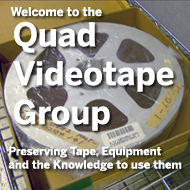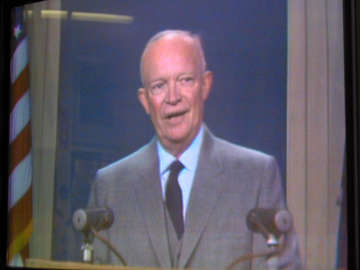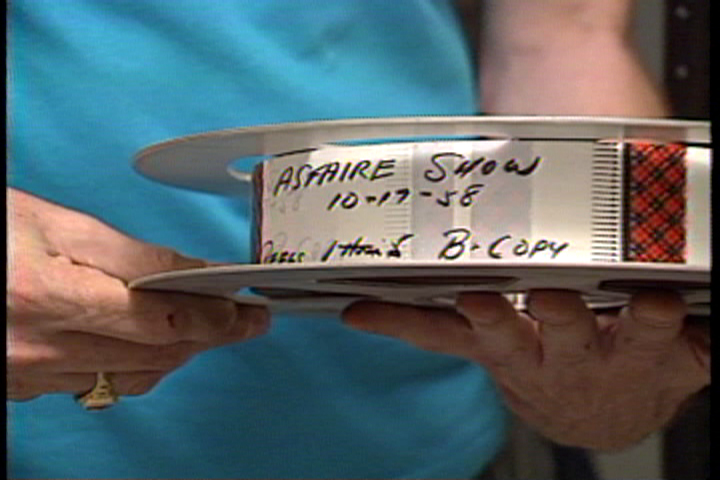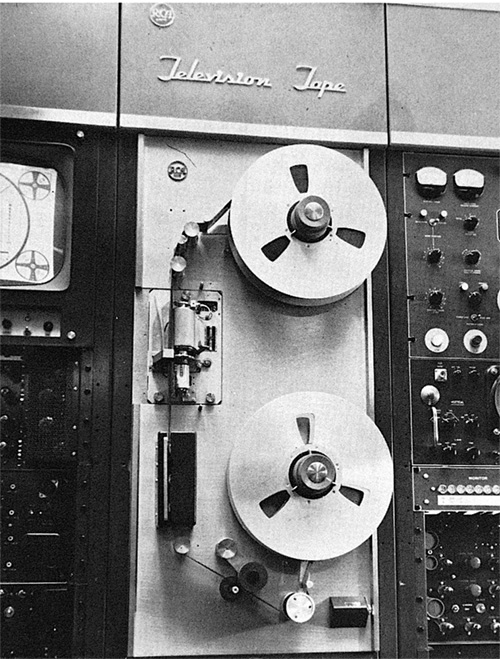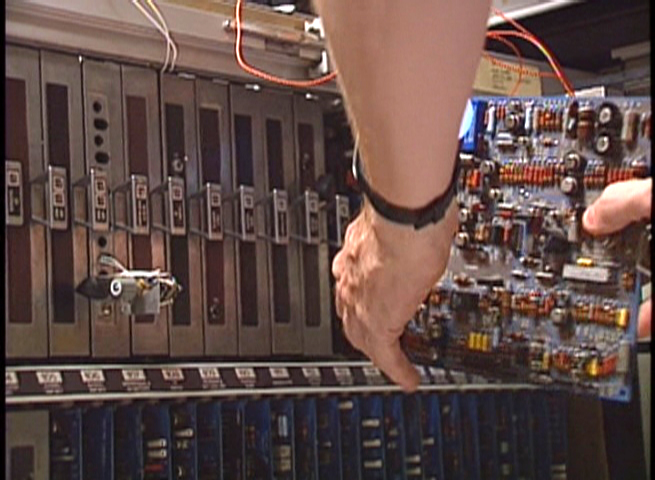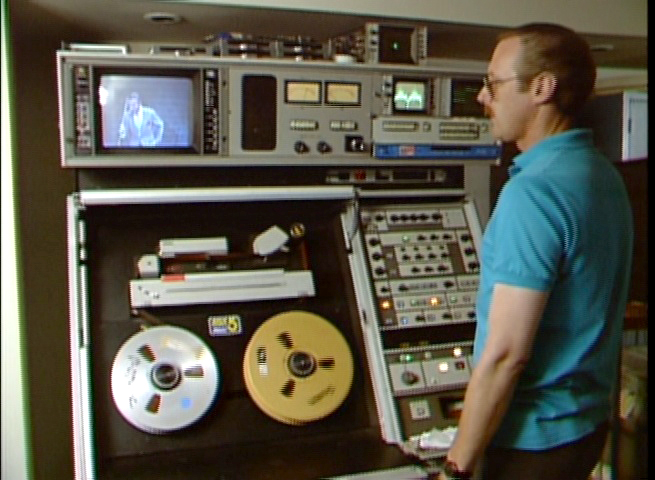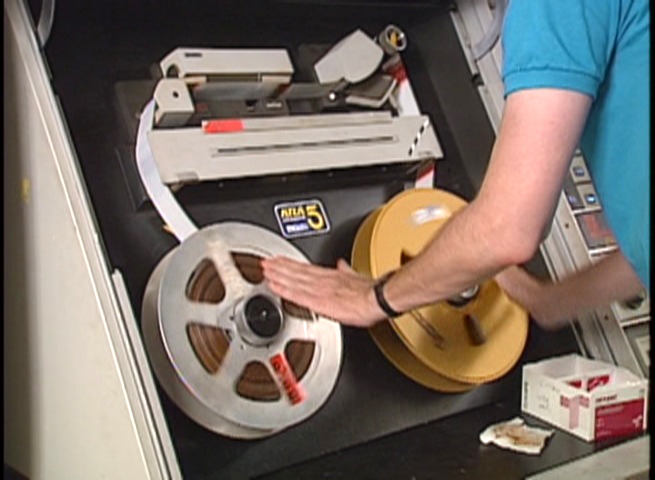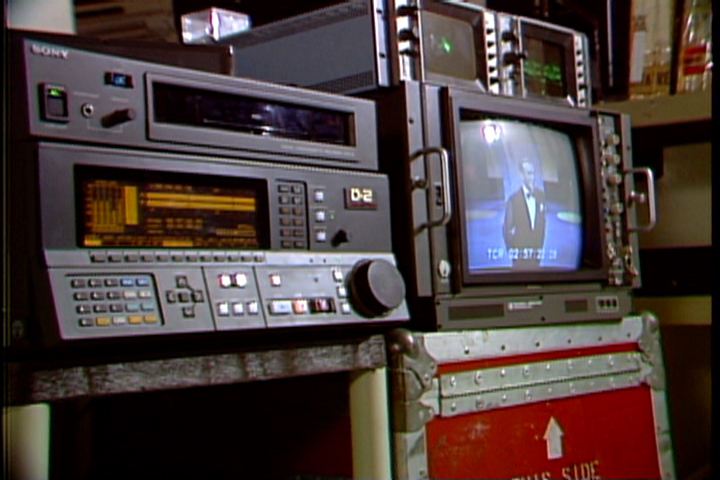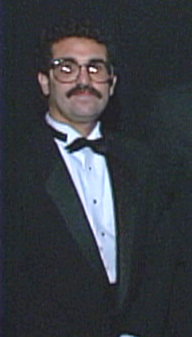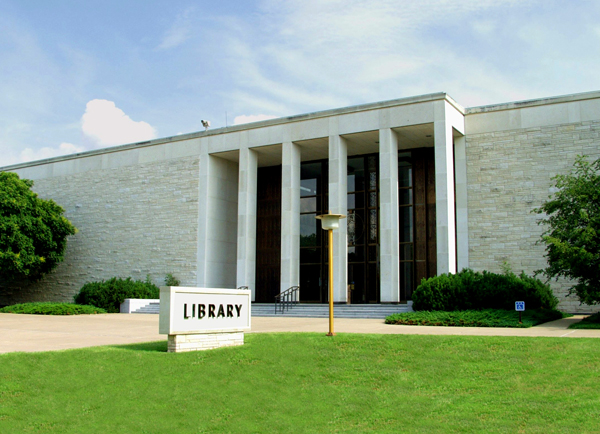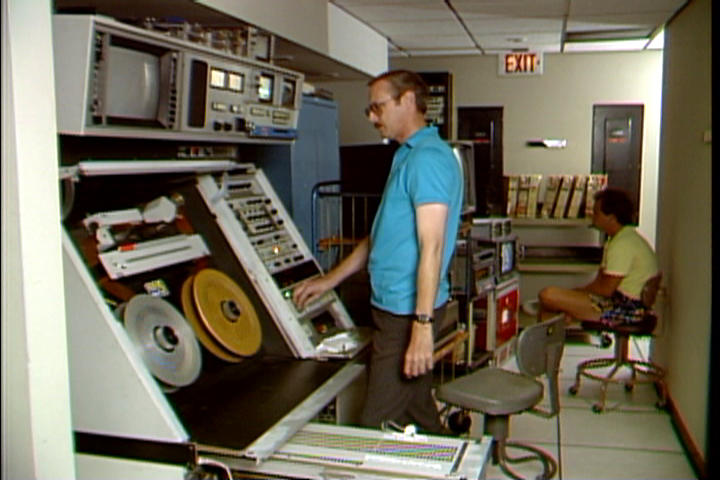| Home |
| Quad History |
| Group History |
| Social Events |
| Discussion List |
| Stories |
| How To Share |
| Tape Help Library |
| Equipment Help Library |
| Manuals On-Line (PDF) |
| Donate |
| Links |
This website and mailing list is focused on 2" Quadruplex Videotape:
The Recorders, Recording, Playback, Maintenance, Equipment Design and Tape Preservation,
and the Preservation of Knowledge about these subjects so that knowledge can
be used by new people today or years from now to preserve the content contained on Quad tapes.
Sharing your experiences working with Quad tapes, recorders, their quirks and foibles can be very helpful in migrating the thousands of aging Quad videotapes now just sitting on shelves at archives world-wide.
Members of this group are working with the Library of Congress National Audio Visual Conservation Center in Culpeper, Virginia at the request of Steven Nease, the Chief Technology Officer for the NAVCC.
Historical stories or personal recollections are welcome. We all need a laugh, an "Ah-Ha!" or to
remember when "that happened to me."
| A Quad Tape milestone : | |
Monitor Photo of Quad tape restoration to D-2 dgital tape by Ed Reitan, Don Kent, Dan Einstien, |
May 22, 1958, President Eisenhower becomes the first president to be recorded in color on videotape. The president helped dedicate NBC's brand-new Washington, D.C. facilities housing network and WRC-TV television studios in a live afternoon broadcast fed to the NBC Television network.
|
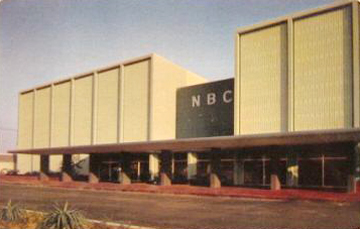 |
Recordings were made 3,000 miles away in the new NBC Burbank Videotape Central, according to Don Kent, who helped restore the tape in 1988. Kent's restoration collaborator Ed Reitan believes they were recorded on Ampex VR-1000 series recorders that RCA modified to use the RCA Labs hetrodyne color method. A recording may have been made at WRC-TV using equipment sent from RCA Labs in New Jersey.
|
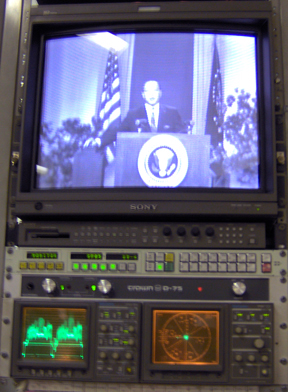 This and following photo © 2006 Ted Langdel |
President Eisenhower, RCA Chairman David Sarnoff and NBC President Robert Sarnoff spoke at the dedication. It was covered by a combination of RCA Image Orthicon black and white cameras, and in monochrome by the two RCA three-I/O studio color cameras until... |
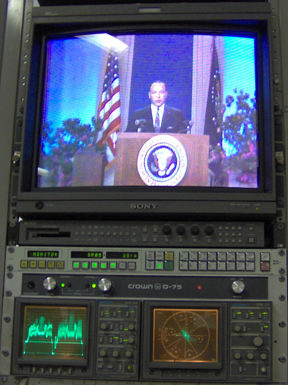 |
Robert Sarnoff hit the big button under his right hand... A tape of the broadcast ended up in the Library of Congress holdings. Another was sent to the President. |
Don Kent holds the B-Copy of content for part of "An Evening with |
Fast forward 30 years. Kent and Reitan are in the middle of trying to restore another early NBC Burbank recording, "An Evening with Fred Astaire." "The effort involved historical research into the history of RCA's development of practical Color Video Tape recording and playback," Reitan told Quad Videotape Group's Ted Langdell.
|
|
"I use the terminology "RCA Labs Color" for the format of the original Eisenhower, Astaire, and other NBC color tapes used on the modified Ampex machines at Burbank from early 1958 through at least April 1959," he said.
|
|
"I suggest the term 'RCA Broadcast Color' for the format of the tapes produced by the RCA TRT-1AC, the first color recorder produced by RCA Broadcast of Camden, N.J., and also used by NBC at Burbank starting in April, 1958," Reitan advised. "These are distinguished from tapes made to the later “Low Band Color“ standard later promulgated by SMPTE."
|
Don Kent slides in one of the AVR-1 circuit cards Ed Retian modified |
Recovering color meant major work on the Ampex AVR-1 they were using. "The machine was the last operable 2" that KTLA had," Kent recalled. "Some ten AVR-1 boards were modified and replaced production boards within the standard AVR-1," Reitan advised. Reitan did the design and mods to a spare set of boards.
|
All but two of the oldest known color videotapes are lined up on a cart |
Testing and adjusting the AVR-1 required the only resources they had... the tapes from 1958. "We actually DID run the original tapes back and forth to set the machine," Kent says about the early stages of the process. "Their dropouts were sometimes so bad (depending on the tapes we used) that we weren't really concerned about damaging them any further." "I did do a thorough cleaning of the tape path each time I reloaded a tape, though. Once the correct deemphasis curve was set, the tapes played pretty well."
|
Don Kent monitoring a transfer of RCA Labs Color on the KTLA Ampex AVR-1 |
"When Ed modified the de-emphasis curve he had to do an opposite pre-emphasis in another circuit," Kent advised. The entire process took several weeks. We wanted to get it right the first time," Kent said. The AVR1 designer—Al Trost—made a special trip down to help, Kent noted.
|
Don "Does the Dance" while threading the AVR-2 wth another reel |
Why an AVR-1? Kent said, "...basically it's because the AVR-1 made a better picture. It's AGC circuits meant no-banding. The 1200 had a "non-standard" setting on it's Colortec, so a heterodyne tape would play from it without assistance, provided that the de-emphasis circuits were modified, but it would still have banding in the picture. Same for a VR-1000 or VR-2000. Besides, this is all we had!" |
Sony D-2 Serial # 2 records one of the Fred Astaire Quad reels |
The processing was done through an NEC NTC-10 timebase corrector. It just made a smoother picture. The machine was outputting a fairly decent picture through it's own "buffer" (before digital timebase correctors came along), but we broke the chain and tapped out of the demod signal to feed the NEC TBC. D-2 copies of the Quad Astaire and other tapes were made. |
UCLA Archivist Dan Einstein |
While this was going on, their other collaborator— UCLA film and television Archivist Dan Einstein— brought in the WRC-TV dedication tape from the Library of Congress. Kent recalled, "It wasn't in very good shape, though. We played the thing for them, but that had been attempted MANY times over the years and the tape was just plain 'messed up.'"
|
Eisenhower Presidential Library, Abilene, Kansas |
The playback of the LoC tape offered an enticing tidbit when Robert Sarnoff said something about presenting a copy of the tape to President Eisenhower. "After some detective work by Einstein we found the second copy at The Eisenhower Library. They didn't even know what it was!" Kent exclaimed. |
"Let's try this again" |
"They sent it to Dan, who brought it to me. I broke the original hold-down tape on the reel which had been put there in 1958! " "There were still some technical difficulties in the tape, though," Kent detailed. It was originated in Washington; recorded in Burbank; and had 5-kilocycle (bandwidth) sound that was delivered via telco on a different path than the picture. Sound wasn't multiplexed with the picture then. "
|
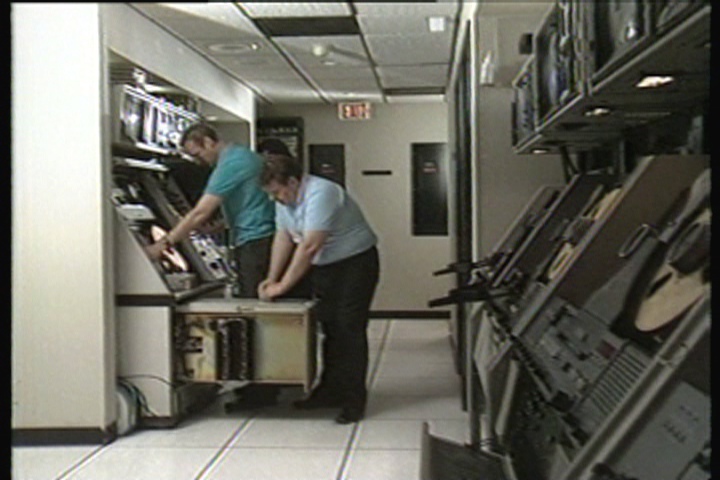 |
"About two-thirds through the show the audio crapped out. NBC had the backup telco line, so they switched to it (during David Sarnoff's speech). Sounded like a phonecall! "I ran it through an equalizer and did what I could to match it, but there just wasn't much there," Kent says. "The original sound is on one track of the D-2 and the equalized audio is on another track." "There's also a video dropout in the Eisenhower tape that couldn't be fixed because of missing frames. I just left it." |
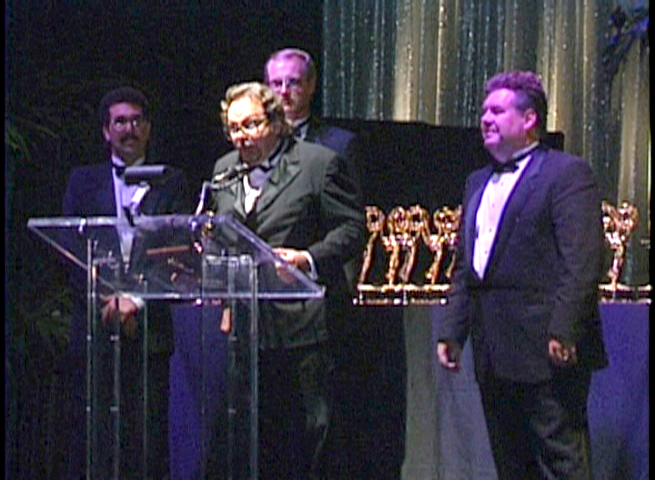 |
Einstein (left), Kent (behind Bob Rosen, the Director of the UCLA Film and Televison Archive at podium) and Reitan (right) recieved an Emmy in 1989 for "Outstanding Achievement in Engineering Development (for) Restoration of the Fred Astaire Specials."
|
|
|
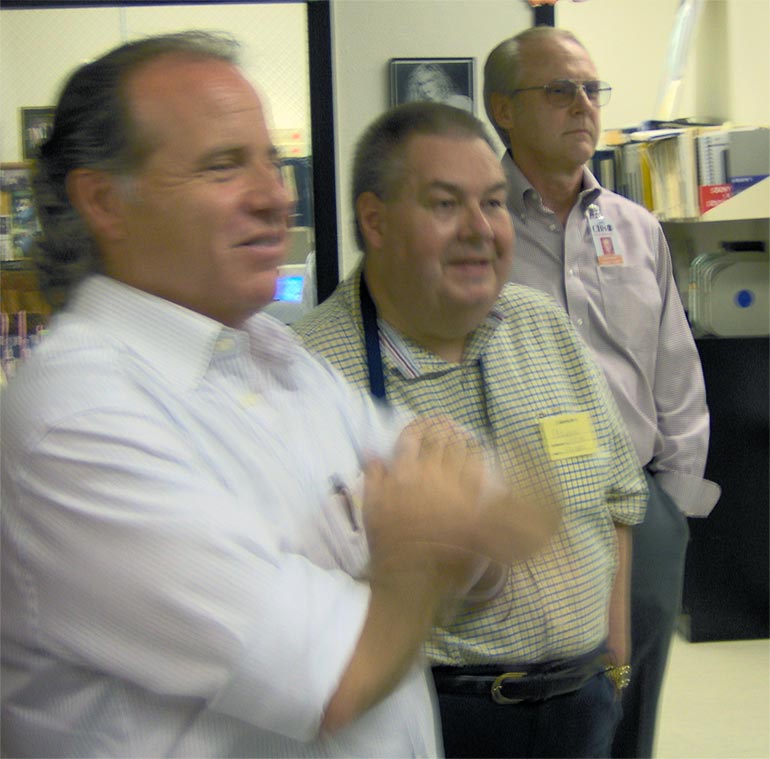 |
Reitan, (center) and Kent (right) watch the playback of their digital restoration inside CBS Television City's "Jurassic Park" during a tour on July 17, 2006 arranged by CBS engineer/colorist David Keleshian for members of the Telecine Internet Group |
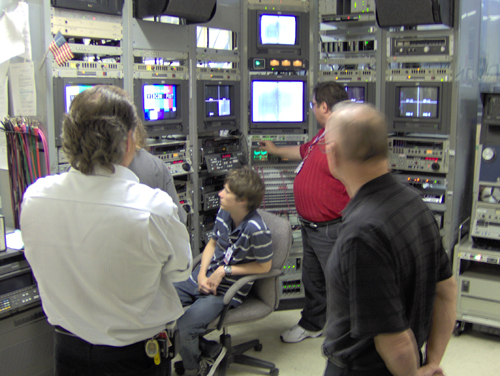 |
"Jurassic Park" is the lower-level facilty at TVC that houses multiple 2" Quadruplex machines, 1" Type C, BetacamSP, Digital Betacam, D-1, D-2 and machines for other broadcast tape formats. This picture shows the interformat racks with rack-mountable analog and digital decks, routing and patch facilities, picture and QC monitoring. Tapes can be fed world-wide from here, and there's at least one in a deck about to hit a bird. Thousands of hours of Goodson-Todman game show Quad tapes were re-mastered here for use on the Game Show Network. |
